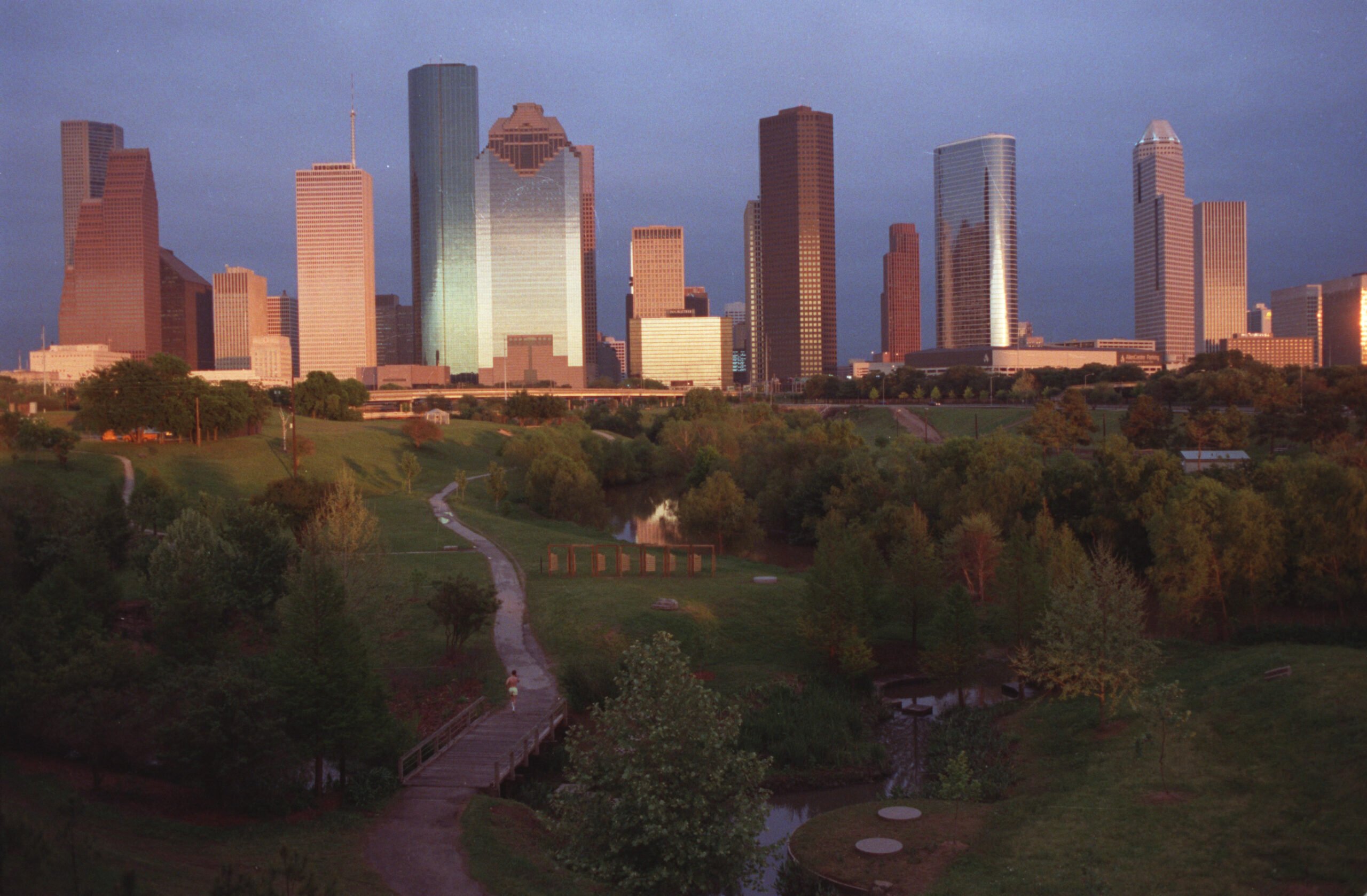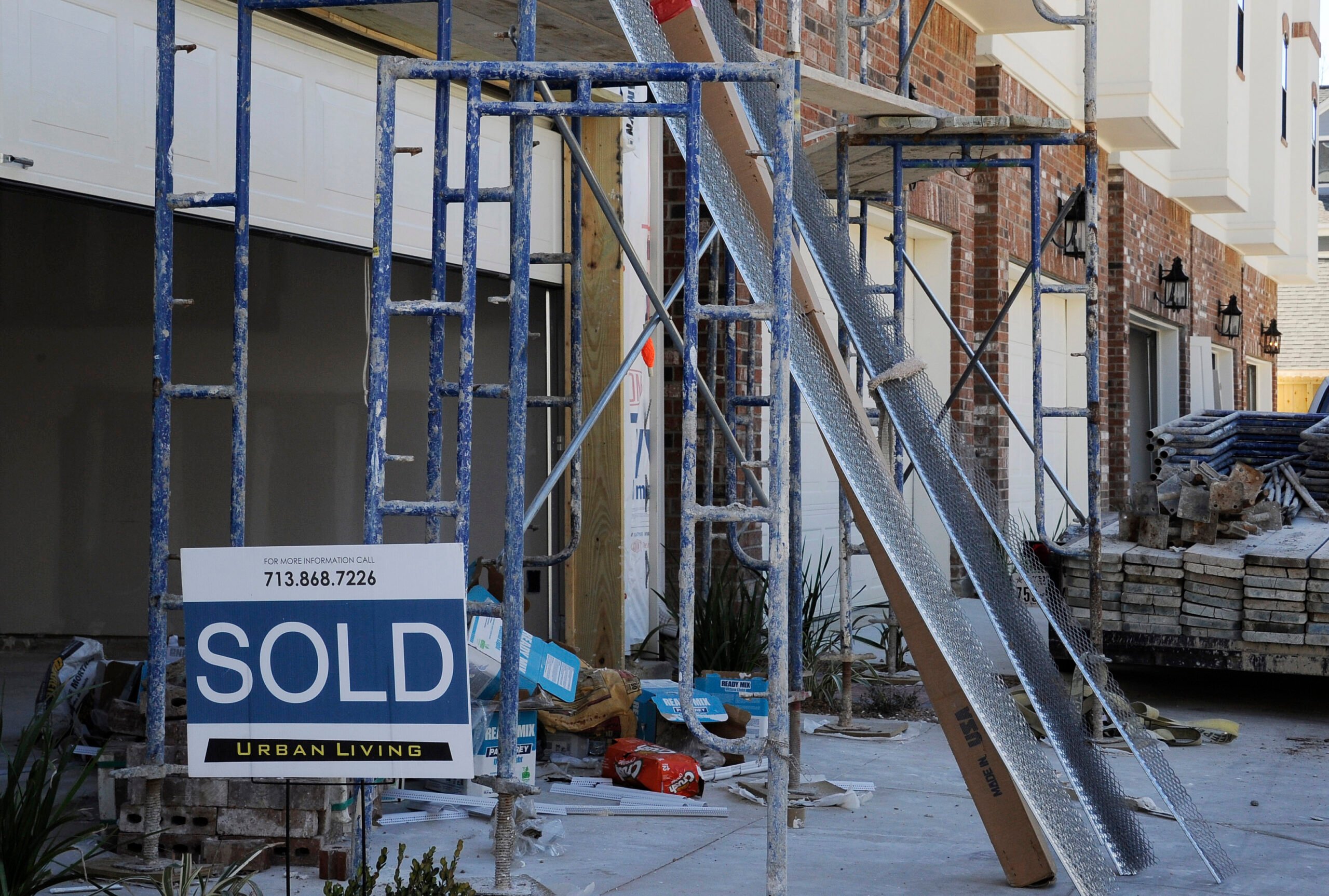“Loose dogs” on Houston’s Northside were roving the streets in small bands, sowing chaos. At least, this was the opinion of the mostly white members of a local civic club near Lindale Park, which has a higher proportion of middle-income whites than the rest of the working-class Latino area.
It was 2013 and—as recounted in a recent academic book, A Good Reputation: How Residents Fight for an American Barrio—the club had invited a veterinarian, also white, to discuss possible solutions. The vet recommended “educating” neighbors about the potential dangers of loose dogs, assuming they weren’t already aware, but another issue quickly arose: The club lacked Spanish speakers. Absorbing this, the vet noted that letting dogs wander the neighborhood alone was technically illegal: “You could, I hate to say it, but threaten your neighbors,” the vet said. Northside was no stranger to policing, but perhaps the answer was broadening its presence. If a carrot wouldn’t work, so came the stick.
Meanwhile, other local groups installed cameras to catch illegal trash dumping and surveil neighbors throughout the day. The goal was to squeeze Northside—a neighborhood sprawling from near downtown to just north of Houston’s central 610 loop—into a more attractive investment, largely for homebuyers and business owners who might otherwise be interested in the nearby upscale Heights neighborhood. The barrio, with a population of approximately 25,000, “still has its issues, from crime to a shortage of retail,” Houstonia Magazine noted in 2013, but “to the valiant go the spoils: two-and three-bedroom houses minutes from the heart of Houston for under $200,000.” Development was humming in some of Houston’s other “blighted” neighborhoods, and, despite past broken promises, even some Latino Northsiders were eager for a cut. The future had been all but foretold.
Northside’s fate, however, would be more complicated.

Back in 2007, the term “Opportunity Urbanism” was coined by a team of researchers commissioned by the Greater Houston Partnership, the largest chamber of commerce in the Houston area. The study made the case that Sunbelt metropoles such as Houston, as low-tax havens with few zoning regulations, spelled the future of American cities. Leading the research team was Joel Kotkin, America’s “übergeographer” per the New York Times. The study’s “special advisor” was Stephen Klineberg, a longtime Rice University sociologist whose optimism is something of a calling card. By their estimation, the city of Houston—all 639 square miles of it—had spurred growth nimbly while coastal elite competitors stumbled through a bureaucratic thicket. Case in point, they noted approvingly, was the “significant uptick in new housing and retail construction” in the historically Black and “now gentrifying” Third Ward, south of downtown. In time, Opportunity Urbanism would “generate economic opportunity across the entire income spectrum, for all racial and ethnic groups.”
Reality tells another story. The “significant uptick” in Third Ward construction was accompanied by a 15 percent decline in Black residents and a 170 percent increase in whites between 2010 and 2020, the Houston Chronicle shows. The neighboring and largely Latino Second Ward saw a 25 percent drop in Latino residents and a 50 percent increase in whites. While longtime residents were displaced, the average income in both neighborhoods skyrocketed, and inequality worsened citywide, with a 20-year difference in Houstonians’ life expectancies based on their zip codes as of 2019.
Meanwhile, on the other side of downtown, Northside failed to fall in line: It did lose some longtimers during the same 10-year period, but it gained far fewer white “urban pioneers” than the Third and Second Wards and saw significantly less investment than predicted, puncturing years’ worth of real estate speculation. The question is, why? Was it the “loose dogs,” the illegal trash dumping? No—countless American neighborhoods in similar shape gentrified post-haste. So what’s different about places like Northside?
A Good Reputation, published in May and written by sociologists Sarah Mayorga and Elizabeth Korver-Glenn, a former Northside resident, attempts to answer this question. Building off of Korver-Glenn’s previous research, which argues that real estate professionals’ attitudes and incentives today “actively steer buyers to certain neighborhoods based on race,” A Good Reputation concludes that the individual attitudes, conflicts, and competing visions through which residents understand their neighborhood affect the direction and pace of development—hence the emphasis on “reputation.”
The book’s byword is “heterogeneity,” and, indeed, local idiosyncrasies and random chance hold some explanatory power in Northside. To the authors’ credit, A Good Reputation sees through the pollyannaish dictums characteristic of Kotkin and Klineberg’s study. But as an analytical tool, reputation leaves much to be desired, glossing over larger systemic explanations hiding in plain sight.
When the same measures meant to “generate economic opportunity” across the spectrum fail in ferociously distinct ways, from Third Ward to Northside, it’s worth a radical examination of what went wrong, and how current thinking from some of the region’s most well-funded groups has failed to fully confront it. Particularly today, as the City of Houston faces a deepening financial crisis and infrastructure crumbles with each passing storm, it isn’t only scholars wondering: How the hell did we get here?
Northside is among the oldest Latino neighborhoods in Houston, but it hardly receives the same scholarly attention as its elder Second Ward (aka East End, or, if you ask today’s neighborhood boosters, EaDo, short for East Downtown). In fact, Houston’s history as a whole is criminally understudied. In his 2020 book, Prophetic City, Klineberg notes that the two other recent “comprehensive analyses” of the Bayou City were published in 1988 and 1991.
Perhaps this is because, as a swampy backwater-turned-transport hub, the city’s greatest historical virtue was always that it could deliver you—or cotton, lumber, sugar, and eventually oil—someplace else. Houston was a major military logistics center of the Confederacy during the Civil War, but the city struggled to meet its own energy needs before the early 1900s oil boom and only ever developed a modest manufacturing sector. While Second Ward grew due to its proximity to the Houston Ship Channel, among the Petro Metro’s principal assets, Northside developed around the northern railroads.
During the 1930s, Houston became known as “the city the Depression missed” due to its oil sector and the New Deal initiatives it benefited from, but Black and Latino workers were systematically excluded from most higher-quality industrial jobs by both capitalists and white trade unions. Though among the country’s most diverse cities, Houston has long resisted racial integration, its leaders instead enforcing separation into ethnic enclaves. As the post-World War II economy lost its glow, poverty concentrated in neighborhoods like Northside and the Second and Third Wards. Between 1970 and 1980, nearly a quarter of Latino Northsiders remained under the poverty line. This figure increased to about one-third by 2000, as manufacturing fled the state and country in droves; railroad companies consolidated, laying off hundreds; and the recovery from the 1986 oil crash proved fragile.

Today, Northside is around 86 percent Latino, and as the authors of A Good Reputation note, about 2 percent of occupied homes in the neighborhood lack complete plumbing or kitchen facilities. A light rail line runs through the barrio that many believed would compel further development, but other public infrastructure, including sidewalks and trash pickup, varies from crumbling to nonexistent.
Gentrification is exceedingly common in neighborhoods like these, occurring when developers turn their eyes toward decay and see opportunity. This process has torn through scores of American neighborhoods and uprooted many Houstonians. Some within Northside opposed “white capital” swooping in and flushing people out, Mayorga and Korver-Glenn report, yet others viewed their neighbors as “ghetto” and sought to close bars and cantinas and force homeless people to seek help elsewhere. Several Latino residents told Korver-Glenn to avoid majority-Black areas—“They’ll cross the street to mess with you before a Mexican would,” says one—and many recall the long legacy of 1978’s Moody Park Uprising: a riot in Northside that occurred a year after the infamous police murder of José Campos Torres Jr., a 23-year-old who was arrested, beaten, and thrown into the Buffalo Bayou by a group of Houston police officers.
To the book’s authors, racial animus, particularly anti-Blackness, drove some Latino homeowners to pursue “purge-and-clean” strategies alongside white civic groups to bolster property values and make the neighborhood “safer.” Often, the belief that Northside should remain a distinctly Latino space strengthened the notion that Black residents didn’t belong. This dynamic was counterbalanced by some residents’ “bienvenida orientation,” which welcomed all Northsiders to challenge developers’ schemes to “improve” the neighborhood.
The authors conclude that whether gentrification occurs largely depends on which of these groups wins out. It isn’t straightforward or inevitable; sometimes, as in Northside, development occurs but the speculative bubble deflates, leaving the neighborhood almost where it started. Nevertheless, the “purge-and-clean” efforts have a corrosive effect. In 2022, one “bienvenida” activist noted that imposing gates were appearing around people’s homes. “To me, this neighborhood is pretty much dead,” she said.
From the outset, A Good Reputation seeks to destabilize the notion that gentrification everywhere is as uniform as in Chicago or Brooklyn—where a greater tradition of urban scholarship exists—pointing to Northside as an example of most U.S. neighborhoods. To do so, the authors cite a 2019 study that states only seven cities accounted for nearly 50 percent of all gentrification from 2000 to 2013. Though less boosterish, this emphasis aligns with the Kotkin and Klineberg view that sprawling Sunbelt cities are exceptional vis-à-vis coastal urban centers.
The book neglects to mention that Houston is also listed in that 2019 gentrification study, ranked ninth by number of tracts gentrified, with much of the displacement occurring in Second and Third Ward. Might the lack of gentrification in Northside be linked to its rampant acceleration due south? The authors don’t say. Instead, A Good Reputation’s analysis is mostly insulated to Northside, its emphasis stuck on complicating who we understand as the local “agents”—or middlemen—of gentrification. The deeper question is, why didn’t it happen here?
After coining Opportunity Urbanism in 2007, Kotkin and Klineberg founded separate blandly named brain trusts: the Urban Reform Institute (Kotkin) and the Kinder Institute for Urban Research (Klineberg), which were seeded by some of Houston’s largest real estate developers. The outfits’ visions differ significantly, with Kotkin’s group deploying market fetishism mixed with a tail-wagging-the-dog contrarianism and Klineberg’s favoring more rigorous data analysis and a blinkered faith in public-private partnerships. Whereas the Urban Reform Institute has recently blamed gentrification on urban planners’ attempts to woo the “creative class,” the Kinder Institute, compared to the 2007 study, is today more likely to emphasize gentrification as a problem with deep roots.
Yet both groups share a certain faith that “revitalization” through private development can ultimately serve every resident, while restrictions on the industry—such as higher standards for rental properties—must be “handled with care,” as a 2023 Kinder Institute housing study cautioned. These think tanks set the framework for much of Houston urbanism today, by turns defending current practices and offering marginal reforms to solve the city’s deeply ingrained economic crisis. In adopting this framework, urbanists—who ultimately seek a more livable, walkable city—overlook the simple fact that developers are profit-seekers, not community builders.
Each neighborhood’s location is a political and economic choice. Why pay to redevelop Northside and repair a portion of its infrastructure, for example, when you can more cheaply construct the next Colony Ridge, the briefly notorious development built on predatory lending northeast of town? Desperate tenants and homebuyers will pay for even substandard housing on the periphery, if that’s what capital dictates, and Houston’s particular model of development eggs this on—all while hollowing out the city’s capacity for governance.
Briefly explained, Houston’s past century-plus of development has consisted of the privately funded construction of suburban enclaves—some rich, some poor—initially in its inner core, then outside the 610 Loop and along its beltway, and outside city limits, followed by aggressive annexation that pumped extra cash into Houston’s tax base while avoiding tax hikes. This practice was largely barred by the state in the late ’90s, and today the city is “broke,” to quote Mayor John Whitmire. Expansion outward has continued amoeba-like beyond Houston’s borders, in satellite counties with fewer ways for the city to capture the value created there. Suburbanization disperses people and jobs so that capital doesn’t need the city to organize itself anymore; instead, the city needs capital to keep from falling apart.
In 1985, the historian Joe Feagin wrote that, for more than a decade, Houstonians had complained of poor municipal services, which were spread thin due to the city’s rapidly increasing geographic size. Feagin also noted how a recent state-of-the-art sewer processing facility constructed in North Houston was supposedto drive further development there—except, due to a poor economic outlook and “inadequate” preexisting private sewer lines in the area, the anticipated construction boomdidn’t occur. Today, expensive leaks from private sewage lines plague Houston’s low-income neighborhoods, including Northside. By refusing to curb the most predatory aspects of real estate construction, the city maintains segregation and inhibits redevelopment while encouraging sprawl—all while blowing a hole in its own budget.
Put more cynically, the value of land with functioning services increases through comparison: Developers need regions like Northside to contrast other, more “desirable” investments.

Feagin has also written that, from the global economic downturn of the 1970s onward, land and housing have proven especially lucrative for Houston’s investors—a generally safer place to plant one’s assets than oil. He quotes George P. Mitchell, the late pioneer of fracking and founder of The Woodlands exurb outside Houston: “Energy is a very fast-moving business on pay-out. I have to drill a well every seven years because the well’s gone by then. … But if I build a building, it has a 40-year life.” It appears today’s real estate giants agree. Compelled to grow their investment portfolios, corporate-owned built-to-rent neighborhoods are exploding across the metro area.
Meanwhile, Whitmire—frequently defended by the Kotkin set—has paused or outright canceled projects aimed at densifying parts of the city, citing economic feasibility and lack of community support. Now, having fired half of the city’s department heads since entering office in 2024, he’s facing budget shortfalls, rising rents, deepening inequality, and worsening municipal credit.
Houston urbanists may lean more toward Kotkin or Klineberg, but as a whole they tend to enter into naive alliances with capitalists to implement the change they want to see, while attempting to frame their views as almost apolitical common sense. This hasn’t inspired confidence in many low-income communities in the throes of an ever-worsening eviction crisis, who rightly fear displacement, nor has it produced many outright victories. See, for instance, the “indefinitely” stalled referendum that passed by a wide margin to give Harris County greater power on the metro regional planning board, H-GAC, which orients millions of federal dollars toward highways and other infrastructure projects. The multi-billion dollar expansion of Interstate 45 will move forward too, mostly at the expense of neighborhoods like Northside and to the purported benefit of suburbanites, despite an inspired effort to stop it.
“Let Houston be Houston” may be a cute YIMBY slogan, referring to the city’s historic lack of zoning, but the truth is that Houston being Houston has never benefited all Houstonians. Attempting to incentivize construction with a few land-use tweaks, necessary as many are, won’t make the city affordable for everyone or ensure the city is more than a developer’s plaything. To actually achieve their more admirable goals, Houston urbanists would have to confront what the geographer Samuel Stein has labeled the “real estate state,” describing the condition in which city officials serve primarily as “wealth managers” for landlords, developers, and industrial interests, divvying up lots and offering sweetheart deals in the name of economic development to compete with cheaper options elsewhere, often at residents’ expense.
A truly “people-oriented” city must abolish that dynamic altogether, empowering communities in places like Northside to control their own fate, against those who see their homes—their handprints on the sidewalk, their asadas in the yard—as just another investment.








